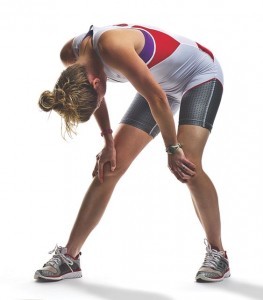Stand Tall for Better Recovery
One of the great things about coaching is that there are plenty of opportunities to train.
We never have an excuse for access to equipment. While it's nice to have access to kettle bells, Olympic platforms and anything that makes a session more enjoyable the truth is all we need is gravity for an effective workout.
But besides that we're always getting exposed to new training methodologies and research. And so this can become our lab. This is the place we test our theories, see what works, what doesn't and how to make any changes if necessary.
And just as the best part of our job is the people we get to work with this place is great in that we can usually find another coach to rope into a training session. Megan, Kayla, Graeme and Jordy all place a high value on training and are always up for the challenge as well.
Recently when training with Megan and Kayla I noticed they were doing something at the end of each set. And it's something most of us do usually out of habit.
[caption id="attachment_4253" align="aligncenter" width="263"] Kayla or Megan? Take your pick
If this were a live presentation and I asked for a show of hands 'who bends over and puts there hands on their knees to recover?' almost 100% of the room would be reaching skyward.
But there's a couple of problems with this.
First of all let's take a look at what an ideal posture should be. And compare this to the common forward head posture many people have.
[caption id="attachment_4254" align="aligncenter" width="300"] Ideal or forward head posture
Ideal or forward head posture
Now if you look at the bottom arrow of the picture on the right you can imagine this is close to where the pelvis would sit. The picture on the left would have a pelvis parallel to the ground and on the right it would be pointed up in the front and down in the back.
The problem with this poor postural position, especially at the hips and pelvis, is that with each inhalation the diaphragm descends and the chest expands. When the pelvis is poorly positioned with a forward head posture this limits the extent to which the diaphragm can descend. And this limits the amount of air that can taken in with each breath.
This gets worse when you drop the head further forward, flex forward at the trunk and round through the low back.
Dropping the head down creates a posterior tilt of the hips & pelvis. Dropping the arms in front of the body limits the ability to expand the chest. And when you compare the recovery rates of people who stop moving after activity and those that walk or move slowly, the movers recovery more quickly and completely.
So being hunched over limits thoracic expansion, impedes the ability of the diaphragm to descend and prevents movement for recovery.
Next time you are running intervals, shuttles or any type of a push-recover type of workout remember to 'stand tall' during the recovery phase.
Chris [fb-like]
When you subscribe to the blog, we will send you an e-mail when there are new updates on the site so you wouldn't miss them.

Comments